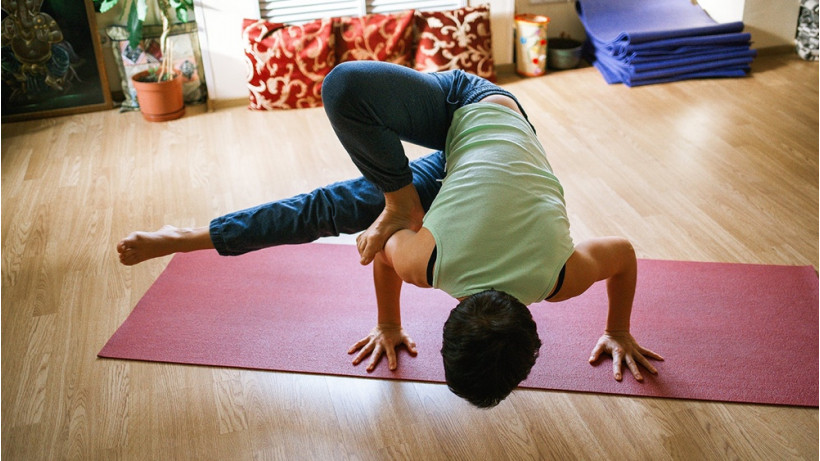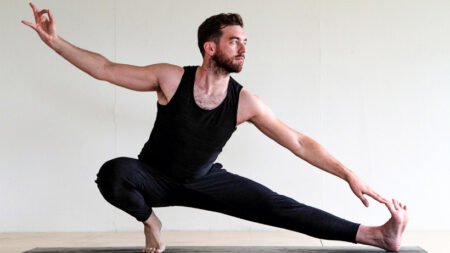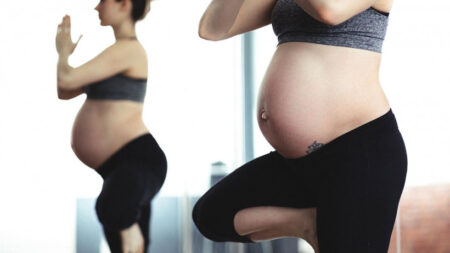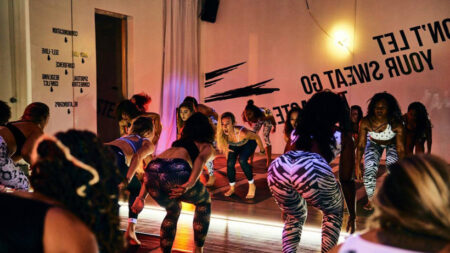Everything you need to know about practising yoga in the comfort of your own home
Whether you’re keen to get into yoga, starting out, or you’ve been downward dogging for years, establishing an independent home practice is something all yogis can benefit from.
Practicing yoga from the comfort of your own home has a number of positives. The main one is that you have the flexibility to choose whatever time works best for you. No rushing to a busy studio when the traffic is bad or getting up ridiculously early to fit one in before work.
There’s also the benefit of being able to wear whatever you like. Nothing beats rolling out of bed and practicing yoga in your PJs, although there’s certainly nothing stopping you from wearing them to a yoga studio… which moves nicely onto our next point: feeling self-conscious.
The mantra of yoga is about concentrating on your own practice, letting go of your ego and never comparing yourself to the person practising next to you. Practicing means the focus rests purely on you alone and however you feel that day.
Pick your spot

If you have an extra room in your house that you can dedicate to your yoga practice, then this is the best way to go about practicing at home, as having a mat rolled out will make it more inviting to practice more regularly.
As that’s not really an option for most, the rest of us can make do with finding a space to roll out a yoga mat and still have enough room around us to ensure there’s no risk of bumping into nearby furniture. An empty piece of wall nearby will also come in handy as it will act as a great prop for some postures that require balancing.
Also try to ensure this space is quiet and peaceful. While not at all necessary, it won’t hurt lighting a candle or incense stick, either; creating the right zen will act as a great foundation for your practice.
When and how to practice
The beauty of practicing yoga at home is that you don’t need to dedicate yourself to a massive 90 minute class 12 hours before it kicks off, like you would in a yoga studio. You can work your yoga around your schedule.
It’s best to simply try and set out a minimum practice for yourself each day, no matter how long. Even if it’s just 15 minutes, make yourself a promise that you will at least unroll your mat and start moving.
There’s no-one judging you other than yourself, so let it go and be content in starting small. This way you can stick with your commitment and feel positive that you’ve made the effort to practice rather than guilty if you don’t have a lot of time or energy that day. Anything over that 15 minutes you committed to is bonus time.
Essentials gear: What you’ll need
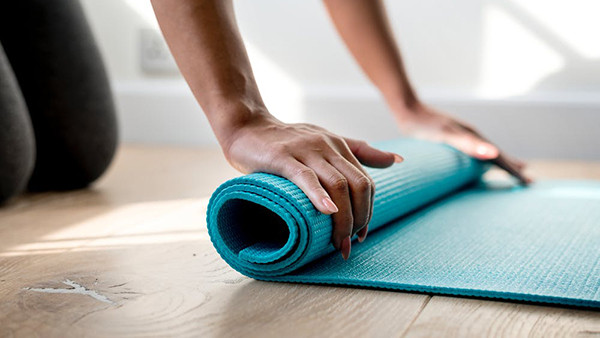
In all honesty, you don’t need to go crazy and buy every yoga accessory out there to practice at home. As long as you have yourself a mat and enough space around it once rolled out, then you’ve got all you need.
When it comes to choosing the right mat, it will depend on the type of yoga that you are practicing. If your practice is strong, and you sweat a lot, it’s worth looking into non-slip mats, as these will give you better control when you’re moving around, especially for arm balances. Liforme and Yogi Bare are popular choices for those looking for a sticky grip.
If your practice is more centred on deep stretches and seated poses, or practicing a more low-intensity type of yoga, such as Yin, then comfort will be a higher priority as you’ll be spending more time on the mat.
For that we’d suggest opting for a mat made from a thicker, more cushioned material (like cork) to provide adequate support. Check out out guide to the best yoga mats to find the right one for you.
There are, of course, other props you can purchase if you feel they’re needed and will help support your practice. Another essential we’d suggest is a pair of yoga blocks – a brick-shaped prop made from foam, bamboo, wood or cork which is used as an extension of the arms.
These are good if you’re find it hard to get into certain poses or can’t quite touch the floor in certain bends. They can also be used to support the back, head and hips. You can usually pick these up for around £10 from places like yogamatters.com.
Then there’s a yoga strap, an essential if you’re into your deep stretches. A yoga strap is basically a fabric belt-type tool that’s used during practice, usually around your feet, to allow you to extend the stretch in this pose and increase your flexibility. It will also help you align your joints properly during yoga to avoid injury. These, too, can be found online from around £5. Again, Yogamatters.com is a good place to start.
Other than that, make sure you grab yourself a towel and water bottle and you’re ready to go. One thing to remember, though, is that most yoga teachers advise not to drink during a yoga class as water can lower your body temperature. The idea of yoga is to increase the ushna (inner fire) inside you, which is said to help you detoxify. By drinking water, the inner fire is put out and the system cools down. So drink before and after your practice, instead.
Streaming classes and on-demand practice
If you’re struggling to remember how to flow between poses, or which order the sun salutations should be in, remember that with the internet at your fingertips you’re never lost.
There are literally thousands of yoga “classes” on YouTube, for example, with qualified yoga teachers giving free short flow tutorials.
Although sifting through them until you find a yoga style and teacher that suits you can become a task in itself. A good starting point is Yoga With Adriene, who has garnered an impressive the following of devotees fans on YouTube.
If you’re looking for something a little more slick, professional and user-friendly, it’s worth looking into a fitness streaming platform. Check out our complete guide to the best yoga streaming services.
Up until recently, there weren’t that many premium streaming services dedicated to fitness, especially yoga. However, in the last couple of years this has all changed.
You can now access online classes that make you feel like your in an actual studio, even in the comfort of your living room – like Netflix but with fitness videos instead of mediocre rom coms and Adam Sandler films.
Don’t neglect teaching
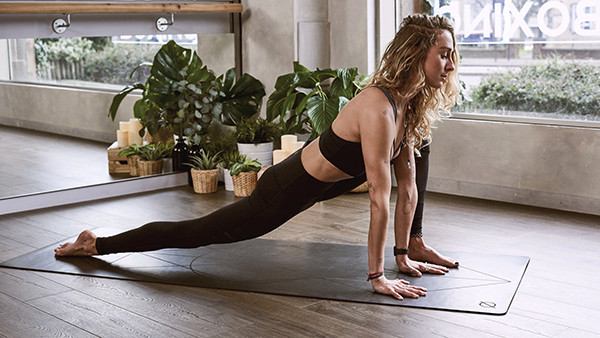
If you’re a beginner and not really practiced yoga before, we’d strongly advise that you attend a few classes with a qualified yoga teacher to introduce you to the discipline before attempting to practice at home by yourself.
A teacher can spot any weaknesses in your practice and correct you if you’re not entering poses correctly and causing any danger to yourself, opening you up to potential injuries later on.
A beginner’s course or ‘intro to yoga’ workshop’ – which you will find at most yoga studios, is a great way to get into yoga as it will give you a solid foundation from which you can develop your own home practice later down the line. Check out our beginner’s guide to yoga [link to beginners guide article] for more tips on kicking of your practice on the right foot.


